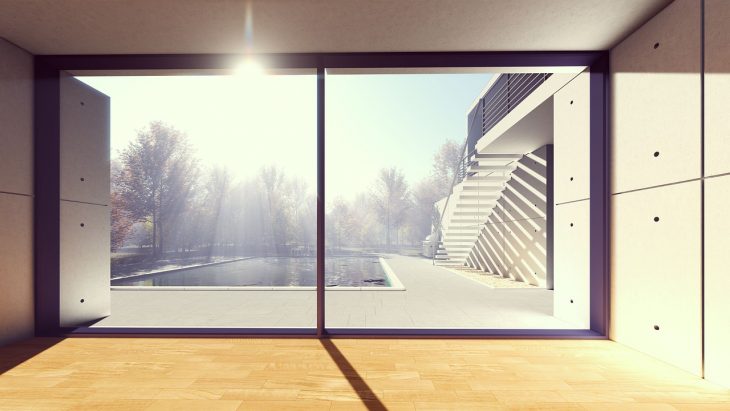
Unless you are not looking to sell your home anytime in the future, you’re continually seeking to make changes to improve it. While some home improvements do a lot to increase the value of your property, most of them do not.
If you’re not looking to resell your home, you can do whatever makes you comfortable in it. As long as whatever alterations you are making are legal, you’re free to do as you please. The real challenge is if you expect to sell within 2 – 5 years. If you’re in those shoes, every expense you make on your home counts and should be seen as an investment.
If you are looking to maintain or increase the resale value of your home, here are a couple of home improvements you should probably avoid doing:
Read more tips from our architecture editor after the jump:

Swimming Pools
When most people picture their ideal homes, they picture a swimming pool in the backyard. However, in practice, a lot of them find that it is far from perfect. Swimming pools come with a whole truckload of maintenance and safety challenges that most people do not want to deal with.
Most families with young children will find an otherwise desirable house inappropriate if it has a pool. Some may even request that the pool is torn out before they can buy the property and that’s going to be an extra cost for you. If your property is unappealing to families with kids, that is a massive chunk of the market you’ll be losing out on.
Admittedly, a swimming pool improving the value of your home can be a regional thing. If you live in places with warmer climates like Southern California, Arizona, Florida or Hawaii, it may come in handy. There are always Socal home buyers looking for houses with pools.
Installing a swimming pool can cost anywhere between $30,000 to $100,000, and that’s money you may never get back when trying to sell off the house. For most homeowners, it won’t be money well spent.
A Fancy Kitchen
Yes, you should renovate your kitchen from time to time to keep it looking good. However, if you improve your kitchen beyond a point, you will approach diminishing returns. Not everyone wants a $10,000 commercial stove or exquisite, imported tiles in their kitchens. Fewer people are willing to pay extra for it.
The major challenge with over-improving your kitchen is the environment you live in. If it’s a high-class neighbourhood, then a lot of potential buyers will expect a kitchen to suit. However, if you live in a regular community, people moving there don’t expect to have a fancy kitchen and will likely look for other options if it makes the property too expensive. The easy way out is always to keep on par with what your neighbours have.
Also, make sure not to personalise your designs as that can be a turn-off for a lot of buyers. Most buyers are looking for a home in move-in condition. If they think that moving into your home will require them to tear down a part of the house, they can get discouraged.

Professional Landscaping
No landscaping is terrible for your property value, but too much landscaping might result in a net negative also. Everyone loves a beautiful backyard. However, if you’re going for a professional touch, you should be aware that most homeowners will not want to maintain it. While it won’t negatively affect the value of the property, it definitely won’t help it.
A safer way is to keep your landscaping to a level you (or any regular person) can maintain if they choose to. That way, you won’t need to spend money on it, and neither will your buyers.
Improvements That Are Difficult To Notice
When making improvements to improve the value of your home, you should know that most potential buyers will rely on their sight to make decisions. This means that anything you do that can’t be seen will most likely not be considered in their preliminary valuation of your property.
Some of these improvements, like a new plumbing system or HVAC systems, are important but will not add to the value of your property. Most buyers see them as maintenance costs and will be unwilling to pay extra for them. They already expect them to be in good order. In fact, you should think of these improvements as regular maintenance costs instead of investments.
Roof Replacement
Roofs need to be eventually changed as they wear out, but you will not be able to add that on the cost of your home when you’re selling. Roofs are generally expected to be changed after 30 years. Much like your plumbing or HVAC system, buyers expect the roof to be in good condition.
This doesn’t mean that you should leave your roof if it’s in bad condition. That will only dissuade potential buyers. In addition to that, if left for too long, it can ruin your walls and cause mould or mildew stains.
If you have to fix your roof, fix it. Just don’t expect to be paid for it. If you think the hassle of fixing the roof is too much, you can still sell the house as is.
Conclusion
All home improvements can be worth it if you’re in the right neighbourhood and the right people are interested in it. Always keep in mind that an improvement may be useful for you but may not make sense for your buyers. Improving your home beyond a certain point will come back to haunt you.
No one wants to pay $300,000 for a house in a $200,000 neighbourhood. If they were looking to pay $300,000 for a home, they probably wouldn’t be looking in your area in the first place. So, before you make that home improvement, do the math and see if it would make sense for your potential buyers. If it won’t, you’re better off doing something else.




















